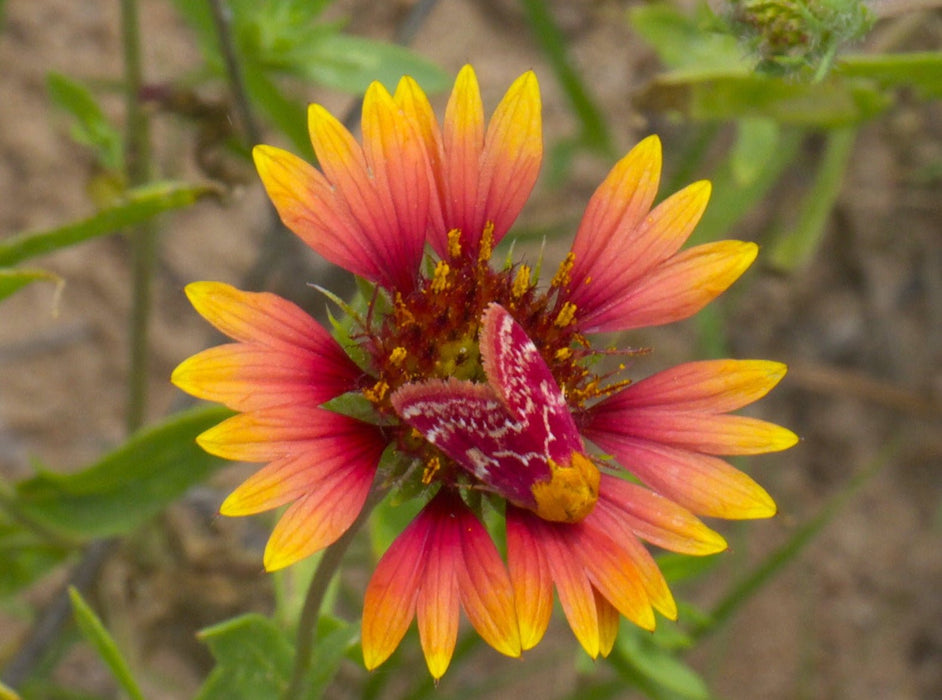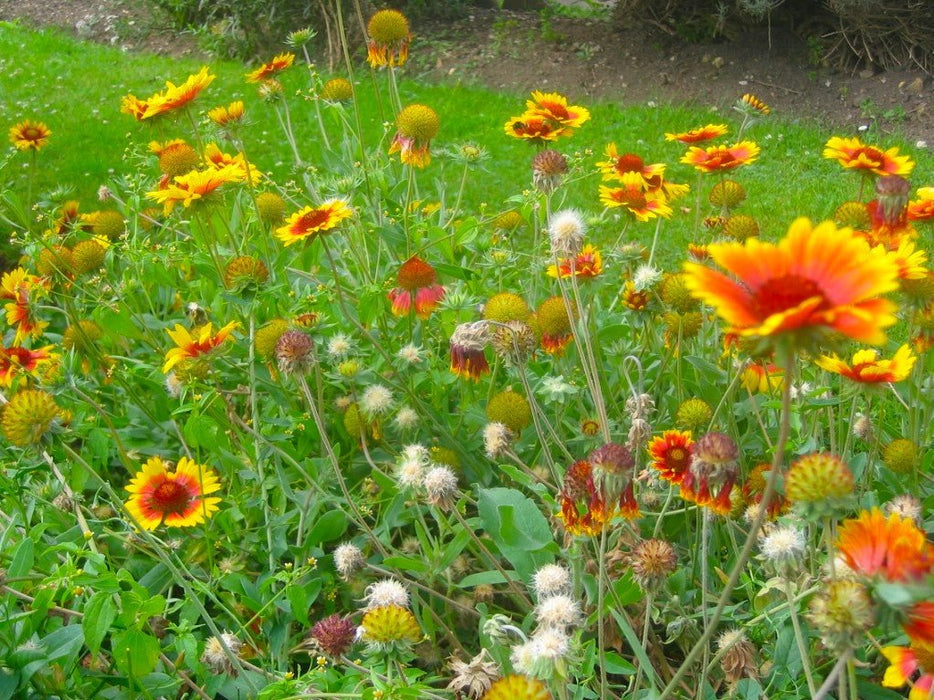
Blanket Flower Seeds (Gaillardia aristata)
Remarkably colorful and drought-adapted, blanketflower is a dryland native perennial, occurring across the inland west from eastern British Columbia south into the Great Basin and eastward across the Great Plains.
With variable colors, blanket flower can appear with with yellow, red, brown, or purple centers, and yellow, or red petals (with flowering occurring from late summer into fall). These flowers arise up to about two feet in height (sometimes much less), from mostly bare stems, with lance-shaped foliage remaining closer to the ground. As the flower heads ripen they release, interesting bristly seeds.
These are consistently excellent bee flowers, often attracting large wild leafcutter bees and dazzling metallic green Agapostemon sweat bees. That said, the most intriguing insect visitors (found in much of the open West) are brilliantly colorful Schinia moths which camouflage themselves with jaw-dropping effectiveness within the flowerheads. These moths (often red and yellow in appearance) are like flying flowers themselves, and are among the most spectacularly colorful moths in North America.
Plant blanketflower in dry, rocky or gravelly soils, with the seeds mostly raked or scattered into bare ground (they need light to germinate). In extremely dry years, it may be mostly dormant, with more prolific flowering happening in years after some decent winter precipitation. This is a plant for full or partial sunlight, for rock gardens, in open understories beneath pines, as a great yard or landscape plant for hot front yards -- however it probably also has untapped potential in a lot of other unexpected human spaces, including spaces in wet climates -- as a tenacious green roof option, as a rock garden specimen, in roadside plantings where urban heat islands cause other plants to wilt.
We think this plant is tolerant of light grazing, wildfires, and it does not need cold stratification to germinate in our experience.
Approximately 200 seed (0.8 grams).

